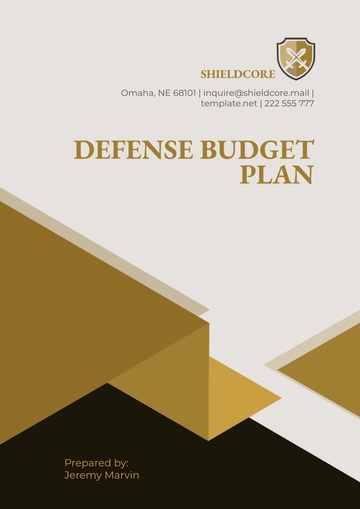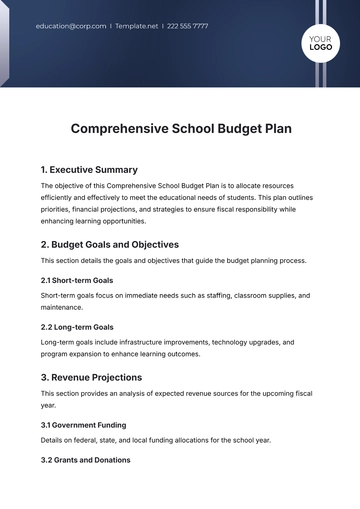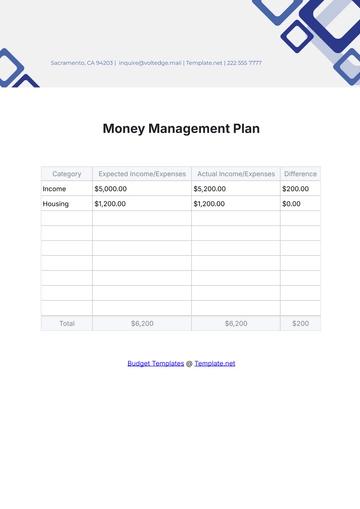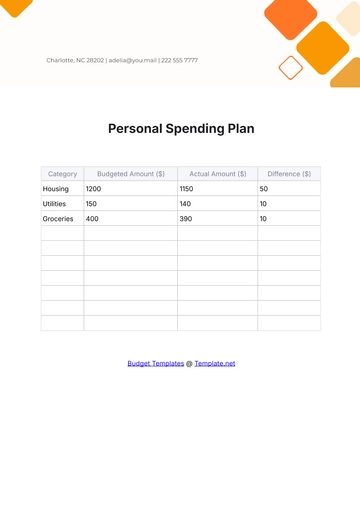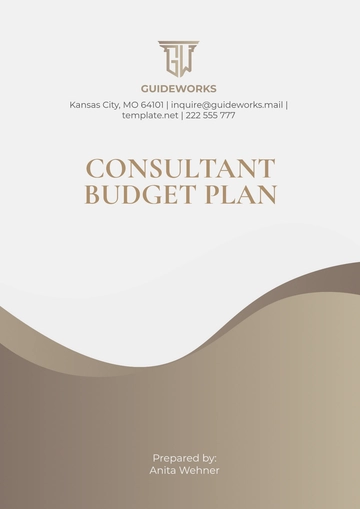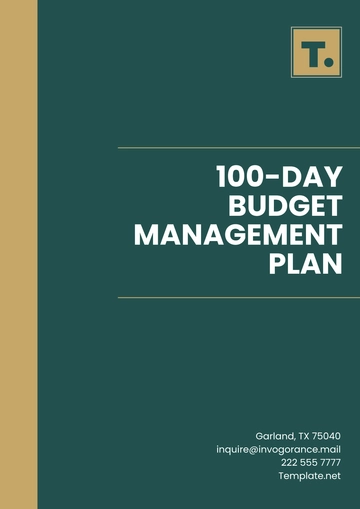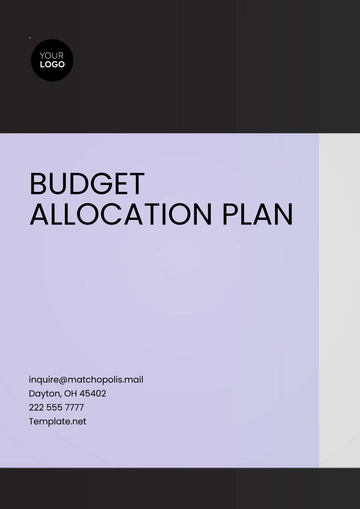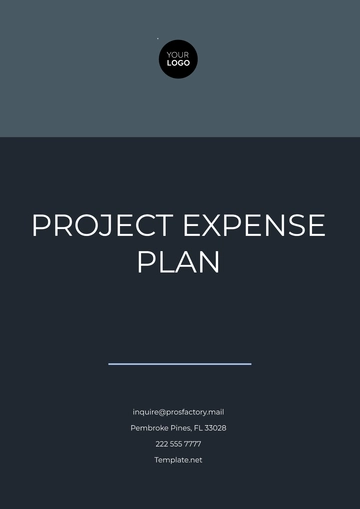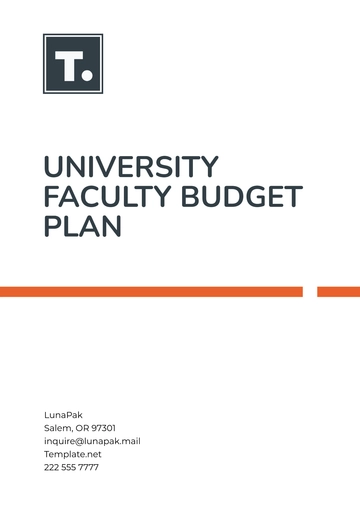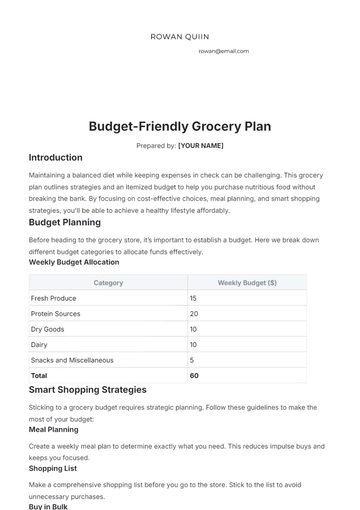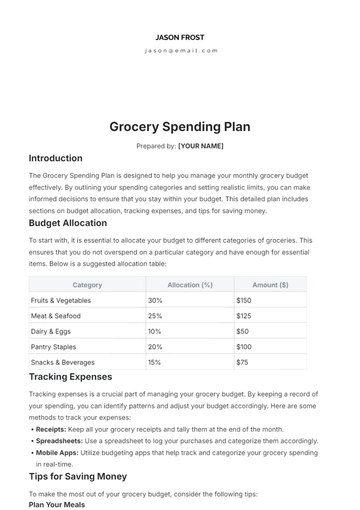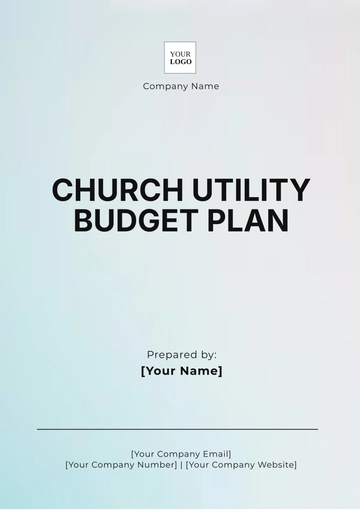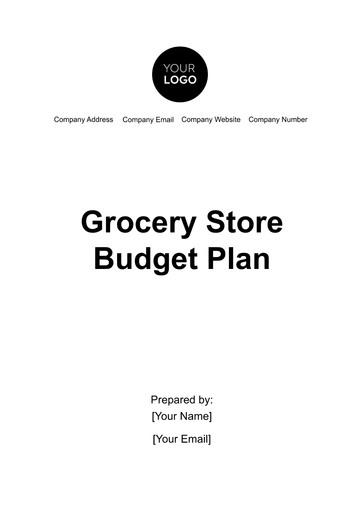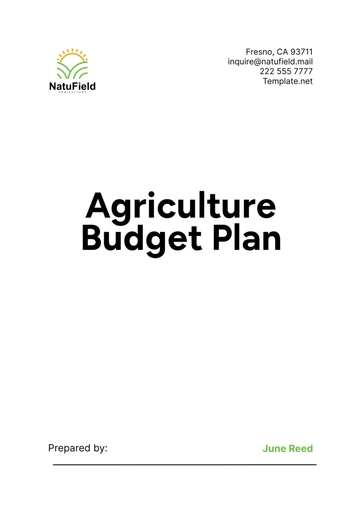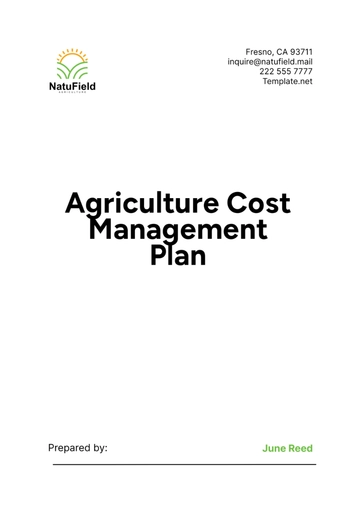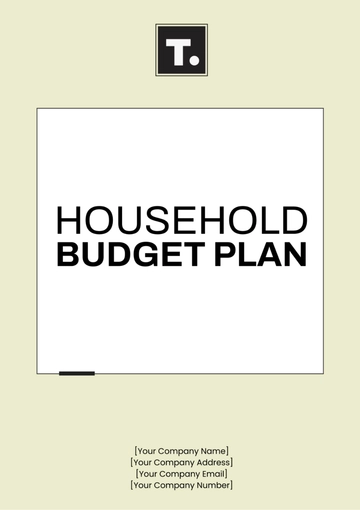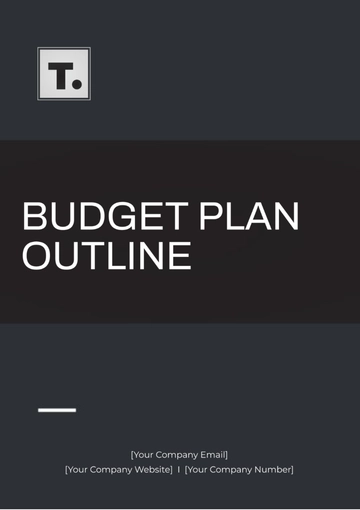Free Church Utility Budget Plan
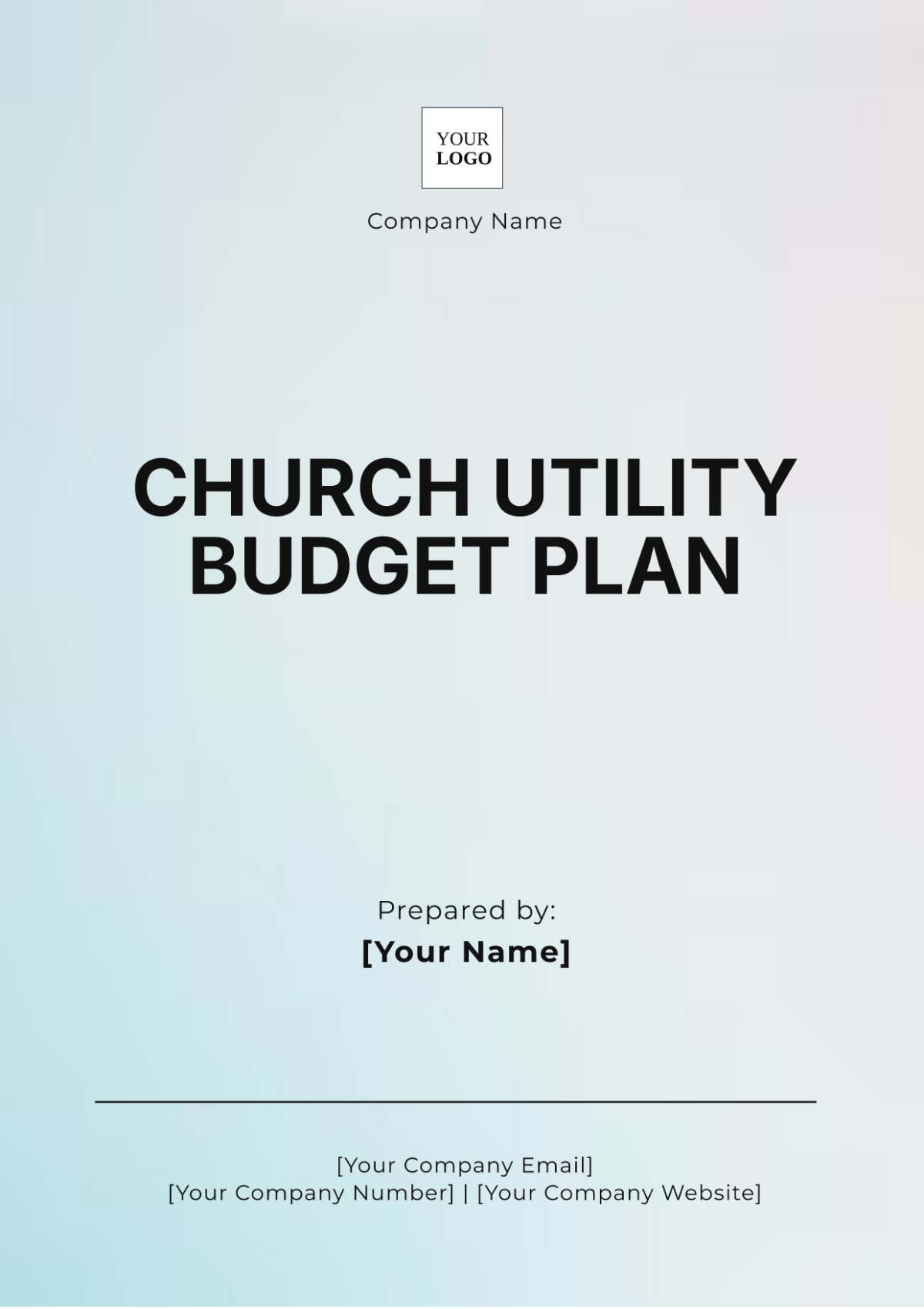
1. Introduction
The Church Utility Budget Plan aims to efficiently manage and optimize the church's utility expenses, encompassing electricity, water, natural gas, and waste management. By carefully allocating funds and implementing strategic cost-saving measures, we seek to reduce expenses while ensuring that church operations remain smooth and effective. This proactive approach will help us maintain a welcoming environment for our congregation while being responsible stewards of our financial resources.
2. Budget Breakdown
2.1 Electricity
Electricity is crucial for powering essential facilities, including lighting, sound systems, air conditioning, and kitchen appliances. As one of the significant components of our utility budget, it is vital to monitor and manage electricity consumption effectively.
Month | Estimated Cost |
|---|---|
January | $500 |
February | $480 |
March | $520 |
April | $510 |
May | $530 |
2.2 Water
Water is essential for maintaining restrooms, kitchen facilities, and landscaping within the church. Effective water management practices can significantly contribute to lowering overall costs.
Month | Estimated Cost |
|---|---|
January | $200 |
February | $190 |
March | $210 |
April | $205 |
May | $215 |
2.3 Natural Gas
Natural gas is primarily utilized for heating during colder months and for cooking in church kitchens. Monitoring usage and ensuring efficient consumption is crucial for achieving cost savings.
Month | Estimated Cost |
|---|---|
January | $300 |
February | $320 |
March | $310 |
April | $290 |
May | $300 |
2.4 Waste Management
Waste management includes regular garbage disposal and recycling services. By promoting efficient waste segregation and recycling practices, we can minimize overall costs associated with waste disposal.
Month | Estimated Cost |
|---|---|
January | $150 |
February | $160 |
March | $155 |
April | $165 |
May | $170 |
3. Cost-Saving Strategies
To further reduce utility expenses, the following cost-saving strategies are recommended:
Upgrade to Energy-Efficient Appliances: Transitioning to energy-efficient lighting and appliances can lead to significant long-term savings on electricity costs.
Install Programmable Thermostats: These devices can optimize heating and cooling schedules, ensuring that energy is not wasted during unoccupied times.
Conduct Regular Maintenance Checks: Routine inspections and maintenance of all utility systems can prevent costly breakdowns and inefficiencies.
Promote Water-Saving Techniques: Implement low-flow fixtures and encourage mindful water usage among the congregation to minimize water consumption.
Encourage Recycling and Proper Waste Segregation: By fostering a culture of recycling and responsible waste disposal, we can decrease our waste management costs.
4. Conclusion
Effectively managing the church's utility budget requires ongoing monitoring and the implementation of strategic cost-saving measures. By adhering to the outlined budget and incorporating the recommended practices, we can ensure financial stability while providing a comfortable environment for our congregation. Together, we can be responsible stewards of our resources, fostering a vibrant and sustainable church community.
- 100% Customizable, free editor
- Access 1 Million+ Templates, photo’s & graphics
- Download or share as a template
- Click and replace photos, graphics, text, backgrounds
- Resize, crop, AI write & more
- Access advanced editor
Streamline your church’s financial planning with the Church Utility Budget Plan Template from Template.net. This user-friendly template is fully editable and customizable to fit your unique needs. Easily track expenses and manage resources, ensuring a clear financial overview. Plus, it's editable in our Ai Editor Tool for quick adjustments, making budgeting efficient and effective.
You may also like
- Finance Plan
- Construction Plan
- Sales Plan
- Development Plan
- Career Plan
- Budget Plan
- HR Plan
- Education Plan
- Transition Plan
- Work Plan
- Training Plan
- Communication Plan
- Operation Plan
- Health And Safety Plan
- Strategy Plan
- Professional Development Plan
- Advertising Plan
- Risk Management Plan
- Restaurant Plan
- School Plan
- Nursing Home Patient Care Plan
- Nursing Care Plan
- Plan Event
- Startup Plan
- Social Media Plan
- Staffing Plan
- Annual Plan
- Content Plan
- Payment Plan
- Implementation Plan
- Hotel Plan
- Workout Plan
- Accounting Plan
- Campaign Plan
- Essay Plan
- 30 60 90 Day Plan
- Research Plan
- Recruitment Plan
- 90 Day Plan
- Quarterly Plan
- Emergency Plan
- 5 Year Plan
- Gym Plan
- Personal Plan
- IT and Software Plan
- Treatment Plan
- Real Estate Plan
- Law Firm Plan
- Healthcare Plan
- Improvement Plan
- Media Plan
- 5 Year Business Plan
- Learning Plan
- Marketing Campaign Plan
- Travel Agency Plan
- Cleaning Services Plan
- Interior Design Plan
- Performance Plan
- PR Plan
- Birth Plan
- Life Plan
- SEO Plan
- Disaster Recovery Plan
- Continuity Plan
- Launch Plan
- Legal Plan
- Behavior Plan
- Performance Improvement Plan
- Salon Plan
- Security Plan
- Security Management Plan
- Employee Development Plan
- Quality Plan
- Service Improvement Plan
- Growth Plan
- Incident Response Plan
- Basketball Plan
- Emergency Action Plan
- Product Launch Plan
- Spa Plan
- Employee Training Plan
- Data Analysis Plan
- Employee Action Plan
- Territory Plan
- Audit Plan
- Classroom Plan
- Activity Plan
- Parenting Plan
- Care Plan
- Project Execution Plan
- Exercise Plan
- Internship Plan
- Software Development Plan
- Continuous Improvement Plan
- Leave Plan
- 90 Day Sales Plan
- Advertising Agency Plan
- Employee Transition Plan
- Smart Action Plan
- Workplace Safety Plan
- Behavior Change Plan
- Contingency Plan
- Continuity of Operations Plan
- Health Plan
- Quality Control Plan
- Self Plan
- Sports Development Plan
- Change Management Plan
- Ecommerce Plan
- Personal Financial Plan
- Process Improvement Plan
- 30-60-90 Day Sales Plan
- Crisis Management Plan
- Engagement Plan
- Execution Plan
- Pandemic Plan
- Quality Assurance Plan
- Service Continuity Plan
- Agile Project Plan
- Fundraising Plan
- Job Transition Plan
- Asset Maintenance Plan
- Maintenance Plan
- Software Test Plan
- Staff Training and Development Plan
- 3 Year Plan
- Brand Activation Plan
- Release Plan
- Resource Plan
- Risk Mitigation Plan
- Teacher Plan
- 30 60 90 Day Plan for New Manager
- Food Safety Plan
- Food Truck Plan
- Hiring Plan
- Quality Management Plan
- Wellness Plan
- Behavior Intervention Plan
- Bonus Plan
- Investment Plan
- Maternity Leave Plan
- Pandemic Response Plan
- Succession Planning
- Coaching Plan
- Configuration Management Plan
- Remote Work Plan
- Self Care Plan
- Teaching Plan
- 100-Day Plan
- HACCP Plan
- Student Plan
- Sustainability Plan
- 30 60 90 Day Plan for Interview
- Access Plan
- Site Specific Safety Plan
